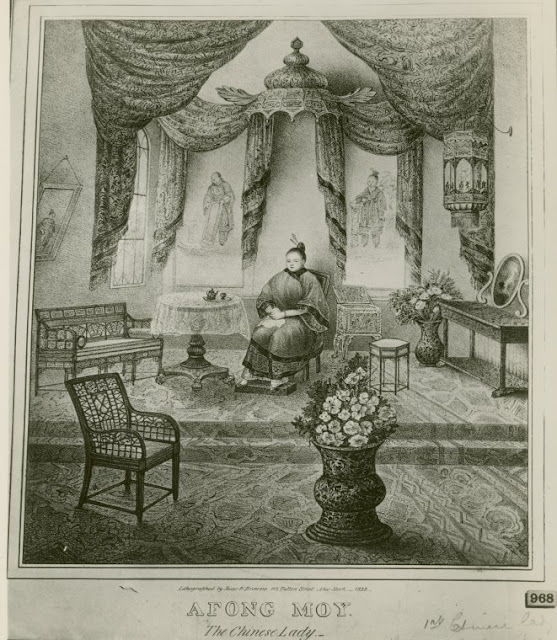The father of the alkaline diet, Robert O Young, is hailed as an inspiration by one of the UK's most popular food writers, Natasha Corrett, but he faces a jail sentence for practising medicine without a licence. One patient who believed he could cure her cancer, British army officer Naima Houder-Mohammed, paid thousands of dollars for his alkaline treatment, which consisted mainly of intravenous infusions of baking soda.
In May 2009 Naima Houder-Mohammed was commissioned as a captain in the British army. The following year, tragedy struck. Naima was diagnosed with breast cancer.
She received treatment and was declared cancer-free. But in 2012, while training with the army skiing team, it was discovered the cancer had returned. Her condition was so serious she was offered end-of-life care.
"She refused to accept that this was the end," recalls her friend and former fellow officer, Afzal Amin.
"Naima was a fighter. She fought to get through selection for Sandhurst. She fought through Sandhurst and she fought her way through her life in everything she dealt with - army skiing or whatever it may have been. And this for her was another fight in that long list of victories."
As her medical options were limited, Naima did what many of us would do - she turned to the internet for a solution.
She came across Dr Robert O Young, an American alternative health writer selling a message of hope for cancer patients online.
Naima began an email correspondence with him, which reveals how pseudo-science can be used to manipulate the vulnerable.
Young is the author of a series of books called the pH Miracle, which has sold more than four million copies around the world.
These books lay out his "alkaline approach" to food and health which has influenced many others, including the work of the British clean-eating guru Natasha Corrett, whose Honestly Healthy brand promotes her take on an alkaline diet.
Natasha Corrett
In one email Young sent to Naima in July 2012, he told her "there is a great need for a daily regime focused on… hyper-perfusing the blood with alkalinity". He went on: "I would suggest your healing program is going to take at least 8 - 12 weeks. It will not be easy but you will be in a controlled environment that will give you the care you need."
Naima set about raising the money she would need - in one email Young mentioned a figure of $3,000 (£2,440) per day.
Naima's family used their savings, ran fund-raising events and managed to pull together tens of thousands of pounds with the help of a charity so that Naima could be treated by Young.
But the treatment did not have the outcome she was hoping for.
On one recent sun-kissed Californian morning, we drove up into the hills outside San Diego to visit Young. As we turned off Paradise Mountain Road, the parched golden grass eventually gave way to groves of avocado trees and we entered a millionaire's paradise known as the "pH Miracle Ranch".
The front door, preposterously set behind a moat, is reached by walking across some stone slabs.
As Young welcomed us into the ranch, our eyes were drawn to an empty spherical fish-tank built into the wall that separated the living area from the kitchen.
Noting our interest, he began to share his alkaline view of the world, starting with what he calls the fish-bowl metaphor. "If the fish is sick - what would you do? Treat the fish or change the water?"
He went on: "The human body in its perfect state of health is alkaline in its design."
The pH of our blood is 7.4, which is slightly alkaline, so Young is broadly correct - although different compartments of our bodies, such as our stomach, function at very different pHs.
But then Young's "alkaline living" vision becomes complete fantasy. Young believes that in order to maintain the pH of our blood, we have to eat "alkaline" foods.
The main problem with this view is that it doesn't appear to take into account the stomach, which functions at a pH of about 1.5 and is the most acidic compartment in the body. Thus, everything we consume, regardless of its starting pH, becomes acidic before passing into the intestines.
Also, the categorisation of foods into alkaline or acidic does not appear to follow any consistent rules, with certain citrus fruits (full of citric acid) considered to be alkaline, for instance.
However, Young's view that alkalinity is good and acidity is bad goes beyond food. He told us: "All sickness and disease can be prevented by managing the delicate pH balance of the fluids of the body."
He believes that when your blood becomes acidic, something weird happens, and your blood cells transform into bacteria - a phenomenon he calls pleomorphism - thereby resulting in a diseased state.
This, frankly wild, view goes against all current scientific understanding.
When we put this to him, he simply disagreed, saying: "Germs are nothing more than the biological transformation of animal, human or plant matter. They're born out of that."
This is post-truth.
The biggest problem is that because Young believes that disease emerges from acidity, then by extension disease can be reversed with alkalinity - echoing his fish-bowl metaphor that you don't treat the disease, but you change the environment.
When Young said Naima would be cared for in a controlled environment, he meant the pH Miracle Ranch, which has a large area set aside as a "clinic" to treat cancer.
Young told us he uses the term "cancerous" as an adjective to describe a state of acidity.
Since 2005 he has brought more than 80 terminally ill patients to stay at his ranch for months at a time. Treatment has included intravenous infusions of an alkaline solution of sodium bicarbonate - the same Arm and Hammer stuff you stick in your fridge to absorb smells.
This was the "healing programme" that was being sold to Naima.
There is no doubting the impact of Young's message. In an email, Naima wrote to him: "I'll be pronounced text book perfect in a few months."
According to her friend Afzal Amin: "Naima was supremely confident that, with her willpower and this therapy, she would be healed. That was the overriding emotion in her that yes, I am going to better."
We put it to Young that someone like Naima, in a terminally ill state, who was desperate for a cure, would buy anything, try anything to help get better.
He responded: "But I wasn't selling her anything… I didn't force her to come here, it was her decision."
Yet, in one email Young insisted on Naima paying for her treatment, before she stepped on to the plane.
All in all, Naima and her family paid Young more than $77,000 (£62,700) for the treatment.
Young told us: "The doctors need to be paid and the people that are doing the massages need to be paid and the colonics, but I gave her the best price to make sure that those people were paid."
There is no evidence whatsoever that infusing an alkaline solution into your bloodstream will do anything against cancer. When we raised this with Young, he said: "These things need to be studied."
After about three months at Young's facility, her condition worsened and she was taken to hospital. Naima was brought back to the UK and died with her family. She was 27.
Afzal Amin told us: "They feel utterly betrayed. It's just horrific that somebody could exploit people for money. This is I think for them the most disturbing element, that for something as cheap as money he was just able to destroy people's lives."
Young's activities at the pH Miracle Ranch have not gone unnoticed by the authorities.
In 2011 the Medical Board of California began an undercover investigation after concerns were raised by a woman treated there.
Investigators were able to establish the prognosis of 15 cancer patients treated at the ranch - none of them outlived it.
One patient, Genia Vanderhaeghen, died from congestive heart failure - fluid around the heart - while being treated. Young told us he was "out of town" at the time.
According to an invoice we obtained, she had been given 33 intravenous sodium bicarbonate drips, each charged at $550 (£448), over 31 days. Some were administered by Young himself.
Last year Young was convicted of two charges of practising medicine without a license, and now faces up to three years in prison.
In court it was revealed that he is not a medical doctor and bought his PhD from a diploma mill.
We asked him if he felt remorse for what he had done. He said: "I don't have remorse because of the thousands if not millions of people that have been helped through the [alkaline diet] programme."
We asked Natasha Corrett to comment on the influence of Robert Young on Honestly Healthy. She told us: "We believe that our bodies should be fuelled with healthy and nutritious ingredients but we also believe that life is about having things in moderation."
(SOurce: BBC)
In May 2009 Naima Houder-Mohammed was commissioned as a captain in the British army. The following year, tragedy struck. Naima was diagnosed with breast cancer.
She received treatment and was declared cancer-free. But in 2012, while training with the army skiing team, it was discovered the cancer had returned. Her condition was so serious she was offered end-of-life care.
"She refused to accept that this was the end," recalls her friend and former fellow officer, Afzal Amin.
"Naima was a fighter. She fought to get through selection for Sandhurst. She fought through Sandhurst and she fought her way through her life in everything she dealt with - army skiing or whatever it may have been. And this for her was another fight in that long list of victories."
 |
| Naima Houder-Mohammed |
She came across Dr Robert O Young, an American alternative health writer selling a message of hope for cancer patients online.
Naima began an email correspondence with him, which reveals how pseudo-science can be used to manipulate the vulnerable.
Young is the author of a series of books called the pH Miracle, which has sold more than four million copies around the world.
These books lay out his "alkaline approach" to food and health which has influenced many others, including the work of the British clean-eating guru Natasha Corrett, whose Honestly Healthy brand promotes her take on an alkaline diet.
Natasha Corrett
- In the introduction to her book Honestly Healthy Cleanse, the food writer says acidity in the body causes "dis-ease", which can show itself in "everyday discomforts" like acne, dry skin and bloating, "to much more serious illnesses, such as cancer, diabetes, heart disease and obesity"
- She says Young "discovered that eating a plant-based diet free from processed foods can help to cure terminal diseases in the body"
- She adds that his work is not recognised by the medical industry, "perhaps because giant pharmaceutical organisations wouldn't be able to make money out of doctors prescribing vegetables"
In one email Young sent to Naima in July 2012, he told her "there is a great need for a daily regime focused on… hyper-perfusing the blood with alkalinity". He went on: "I would suggest your healing program is going to take at least 8 - 12 weeks. It will not be easy but you will be in a controlled environment that will give you the care you need."
Naima set about raising the money she would need - in one email Young mentioned a figure of $3,000 (£2,440) per day.
Naima's family used their savings, ran fund-raising events and managed to pull together tens of thousands of pounds with the help of a charity so that Naima could be treated by Young.
But the treatment did not have the outcome she was hoping for.
 |
| Email from Robert O Young to Naima Houder-Mohammed |
The front door, preposterously set behind a moat, is reached by walking across some stone slabs.
As Young welcomed us into the ranch, our eyes were drawn to an empty spherical fish-tank built into the wall that separated the living area from the kitchen.
Noting our interest, he began to share his alkaline view of the world, starting with what he calls the fish-bowl metaphor. "If the fish is sick - what would you do? Treat the fish or change the water?"
He went on: "The human body in its perfect state of health is alkaline in its design."
The pH of our blood is 7.4, which is slightly alkaline, so Young is broadly correct - although different compartments of our bodies, such as our stomach, function at very different pHs.
But then Young's "alkaline living" vision becomes complete fantasy. Young believes that in order to maintain the pH of our blood, we have to eat "alkaline" foods.
The main problem with this view is that it doesn't appear to take into account the stomach, which functions at a pH of about 1.5 and is the most acidic compartment in the body. Thus, everything we consume, regardless of its starting pH, becomes acidic before passing into the intestines.
Also, the categorisation of foods into alkaline or acidic does not appear to follow any consistent rules, with certain citrus fruits (full of citric acid) considered to be alkaline, for instance.
However, Young's view that alkalinity is good and acidity is bad goes beyond food. He told us: "All sickness and disease can be prevented by managing the delicate pH balance of the fluids of the body."
He believes that when your blood becomes acidic, something weird happens, and your blood cells transform into bacteria - a phenomenon he calls pleomorphism - thereby resulting in a diseased state.
This, frankly wild, view goes against all current scientific understanding.
When we put this to him, he simply disagreed, saying: "Germs are nothing more than the biological transformation of animal, human or plant matter. They're born out of that."
This is post-truth.
 |
| Dr Giles Yeo with Robert O Young at the "pH Miracle Ranch" |
When Young said Naima would be cared for in a controlled environment, he meant the pH Miracle Ranch, which has a large area set aside as a "clinic" to treat cancer.
Young told us he uses the term "cancerous" as an adjective to describe a state of acidity.
Since 2005 he has brought more than 80 terminally ill patients to stay at his ranch for months at a time. Treatment has included intravenous infusions of an alkaline solution of sodium bicarbonate - the same Arm and Hammer stuff you stick in your fridge to absorb smells.
This was the "healing programme" that was being sold to Naima.
There is no doubting the impact of Young's message. In an email, Naima wrote to him: "I'll be pronounced text book perfect in a few months."
According to her friend Afzal Amin: "Naima was supremely confident that, with her willpower and this therapy, she would be healed. That was the overriding emotion in her that yes, I am going to better."
We put it to Young that someone like Naima, in a terminally ill state, who was desperate for a cure, would buy anything, try anything to help get better.
He responded: "But I wasn't selling her anything… I didn't force her to come here, it was her decision."
Yet, in one email Young insisted on Naima paying for her treatment, before she stepped on to the plane.
All in all, Naima and her family paid Young more than $77,000 (£62,700) for the treatment.
Young told us: "The doctors need to be paid and the people that are doing the massages need to be paid and the colonics, but I gave her the best price to make sure that those people were paid."
There is no evidence whatsoever that infusing an alkaline solution into your bloodstream will do anything against cancer. When we raised this with Young, he said: "These things need to be studied."
After about three months at Young's facility, her condition worsened and she was taken to hospital. Naima was brought back to the UK and died with her family. She was 27.
Afzal Amin told us: "They feel utterly betrayed. It's just horrific that somebody could exploit people for money. This is I think for them the most disturbing element, that for something as cheap as money he was just able to destroy people's lives."
Young's activities at the pH Miracle Ranch have not gone unnoticed by the authorities.
In 2011 the Medical Board of California began an undercover investigation after concerns were raised by a woman treated there.
Investigators were able to establish the prognosis of 15 cancer patients treated at the ranch - none of them outlived it.
One patient, Genia Vanderhaeghen, died from congestive heart failure - fluid around the heart - while being treated. Young told us he was "out of town" at the time.
According to an invoice we obtained, she had been given 33 intravenous sodium bicarbonate drips, each charged at $550 (£448), over 31 days. Some were administered by Young himself.
 |
| Robert O Young |
In court it was revealed that he is not a medical doctor and bought his PhD from a diploma mill.
We asked him if he felt remorse for what he had done. He said: "I don't have remorse because of the thousands if not millions of people that have been helped through the [alkaline diet] programme."
We asked Natasha Corrett to comment on the influence of Robert Young on Honestly Healthy. She told us: "We believe that our bodies should be fuelled with healthy and nutritious ingredients but we also believe that life is about having things in moderation."
(SOurce: BBC)




























